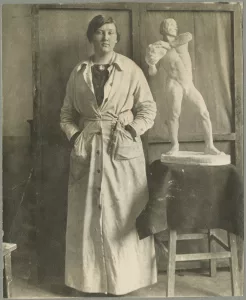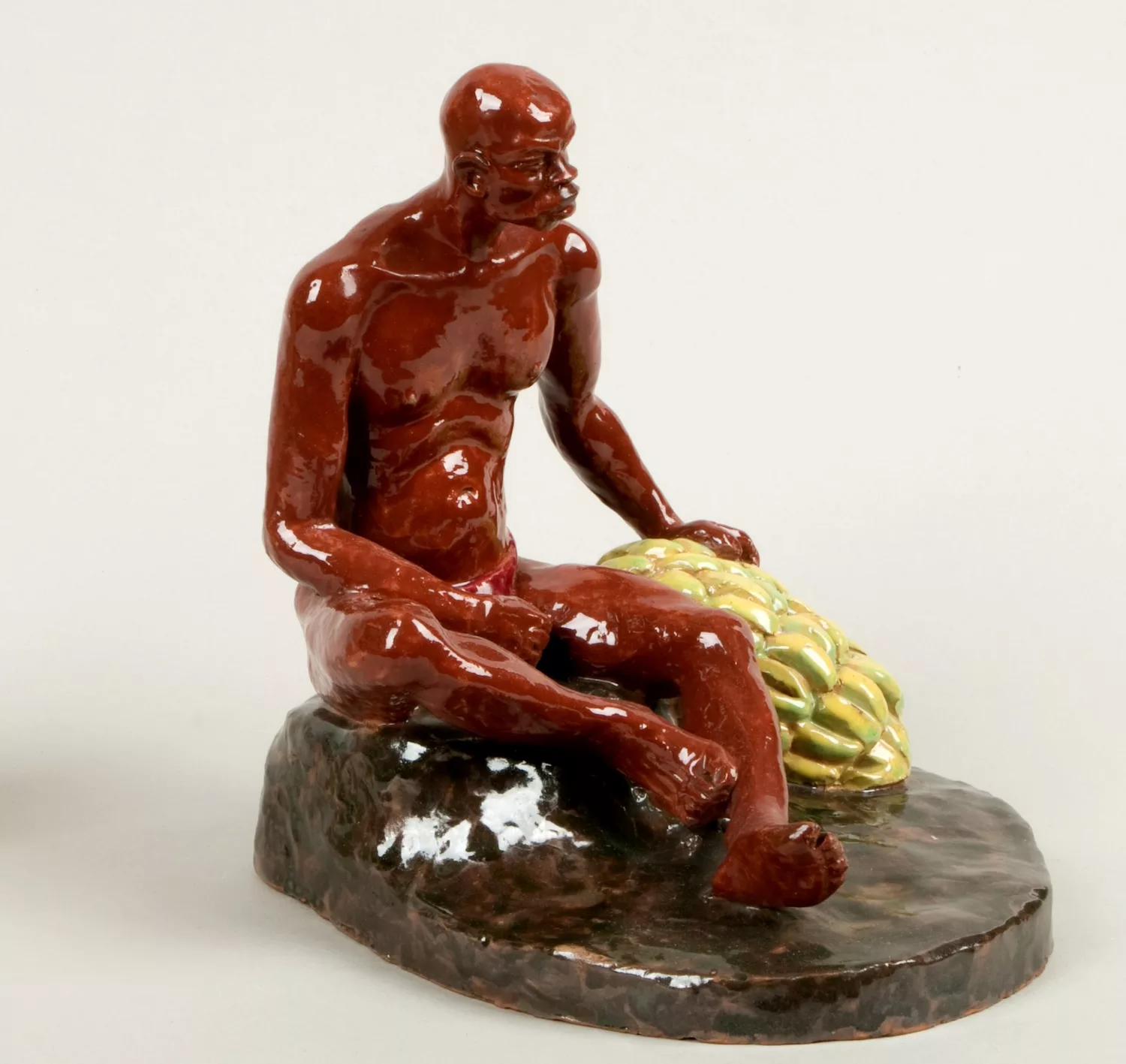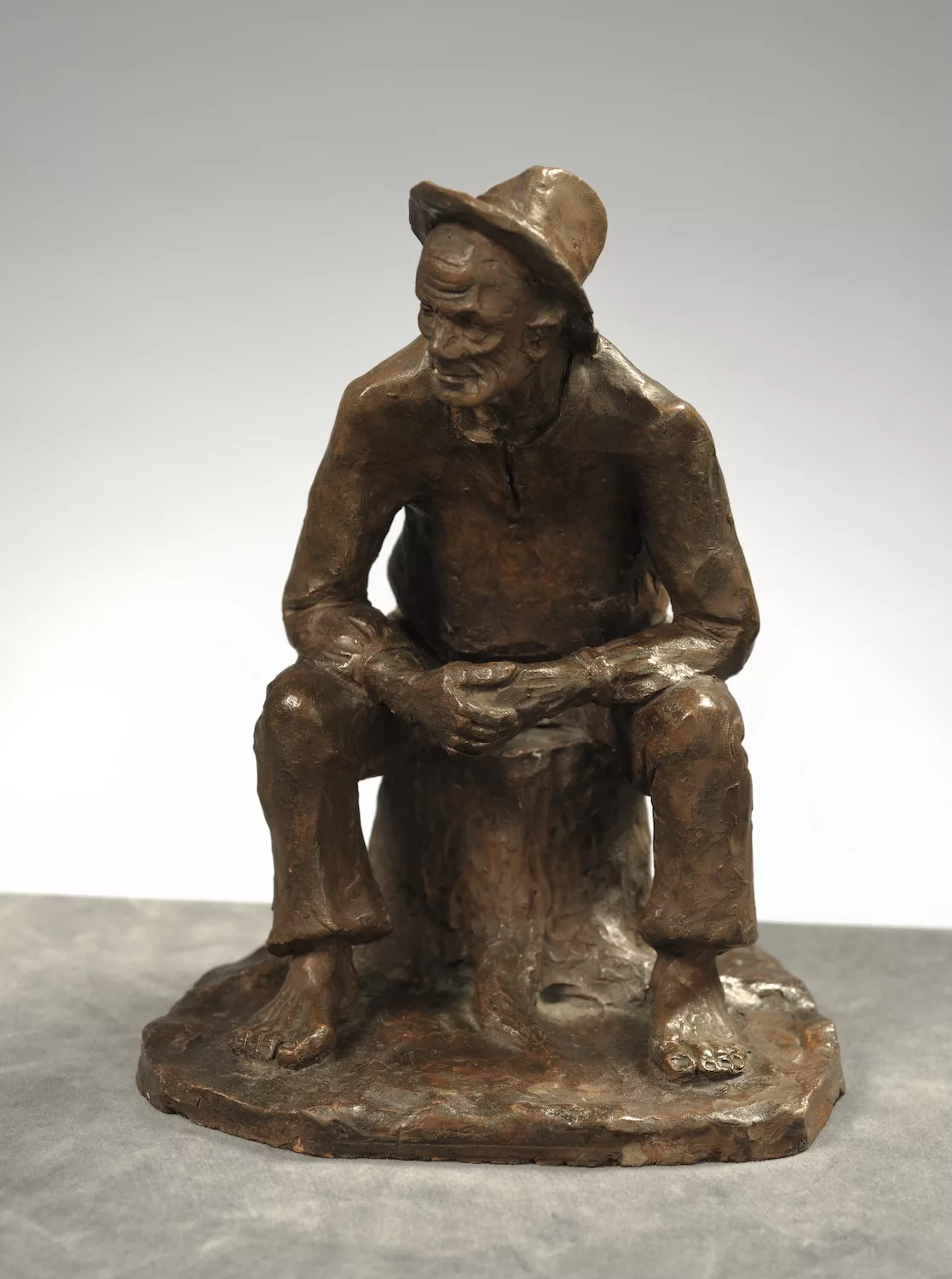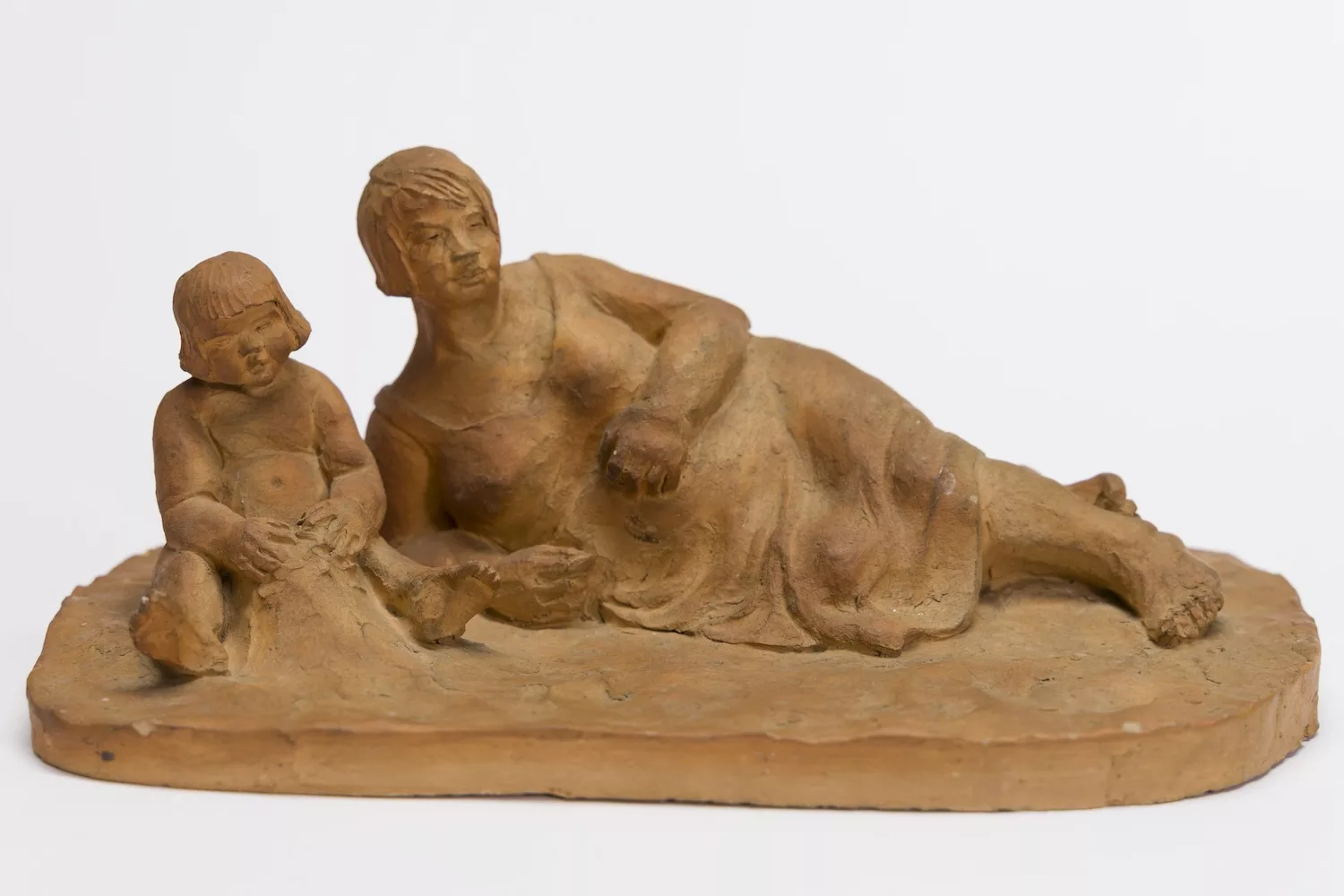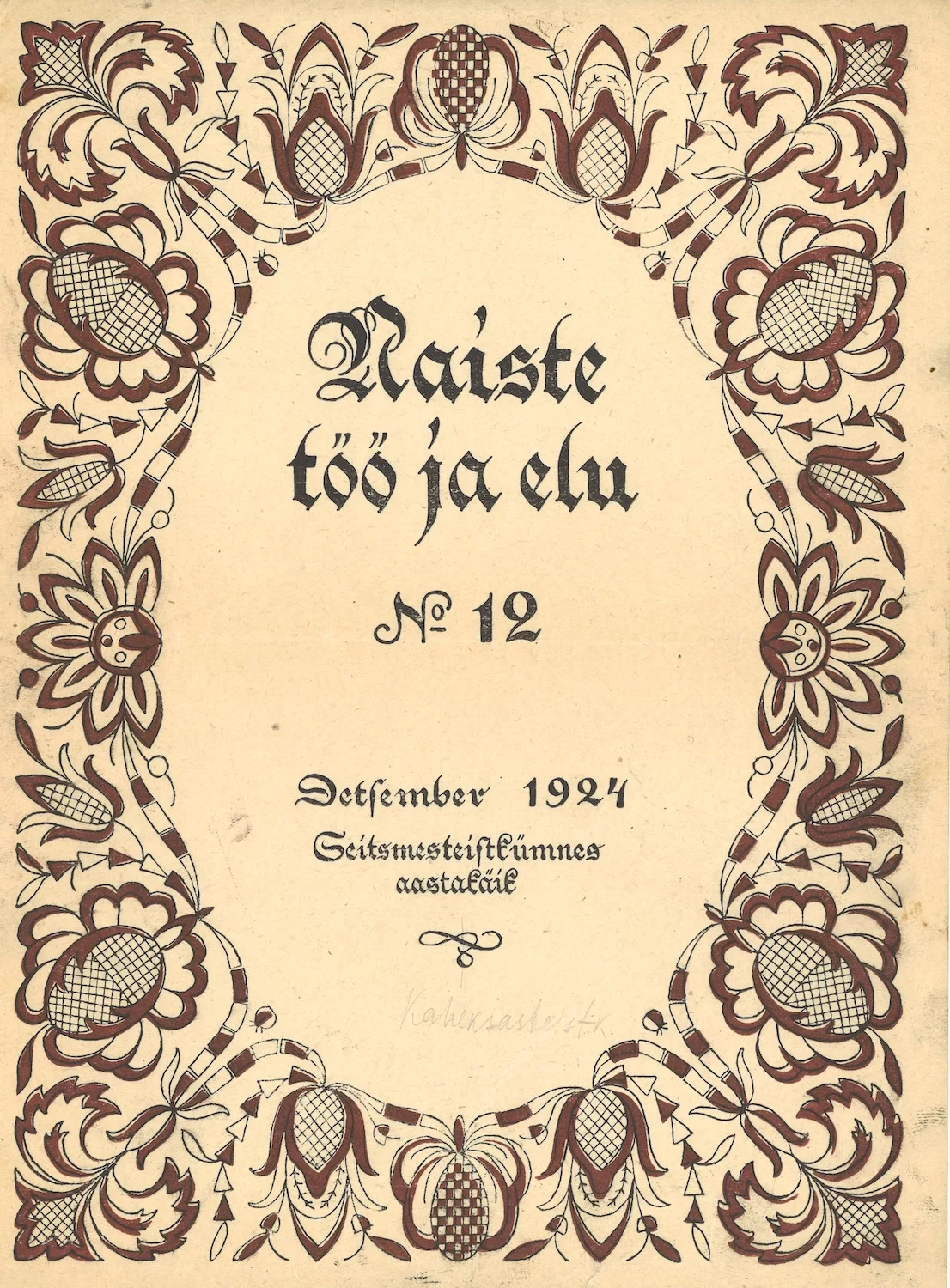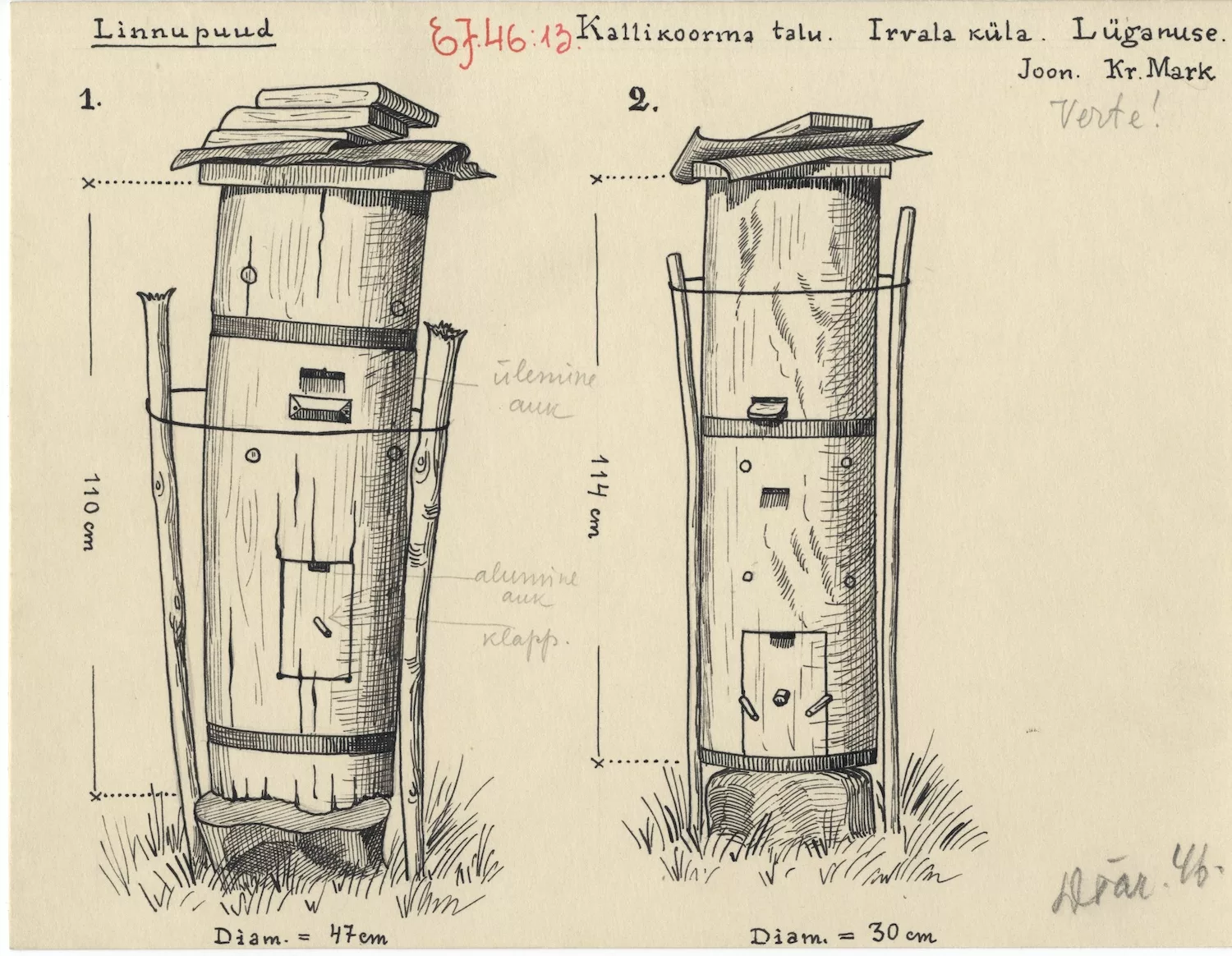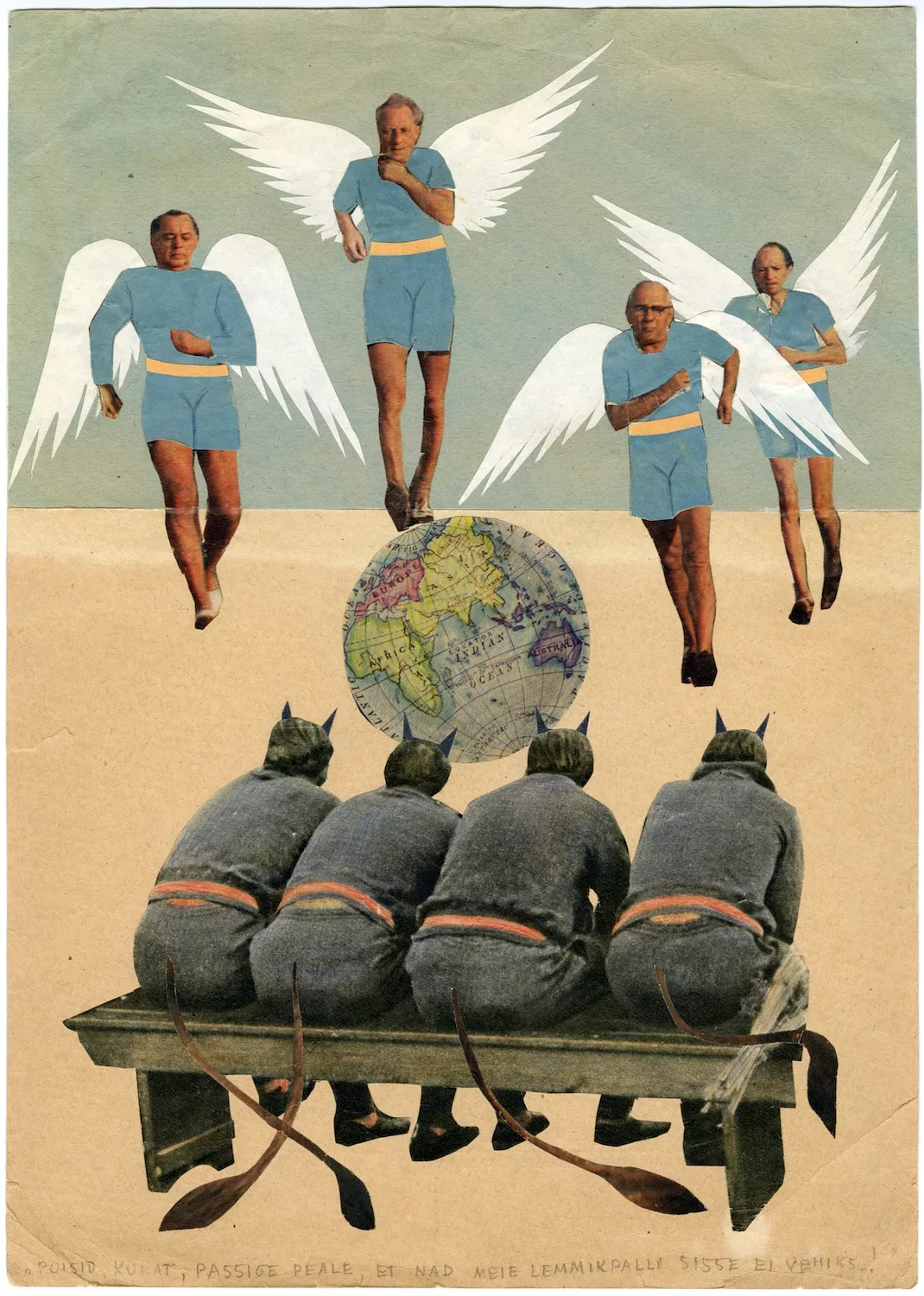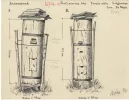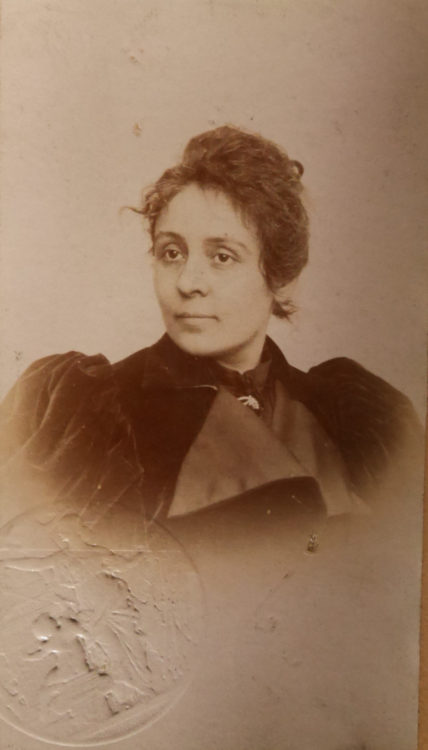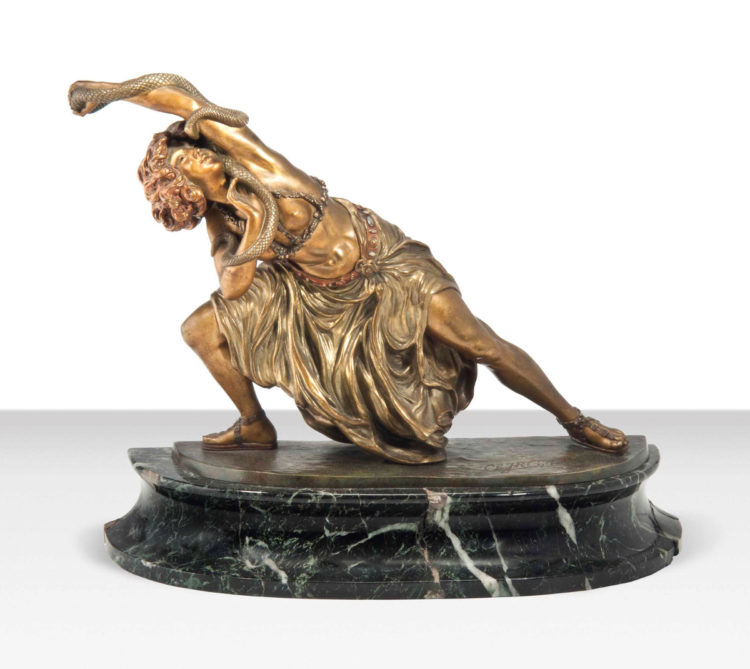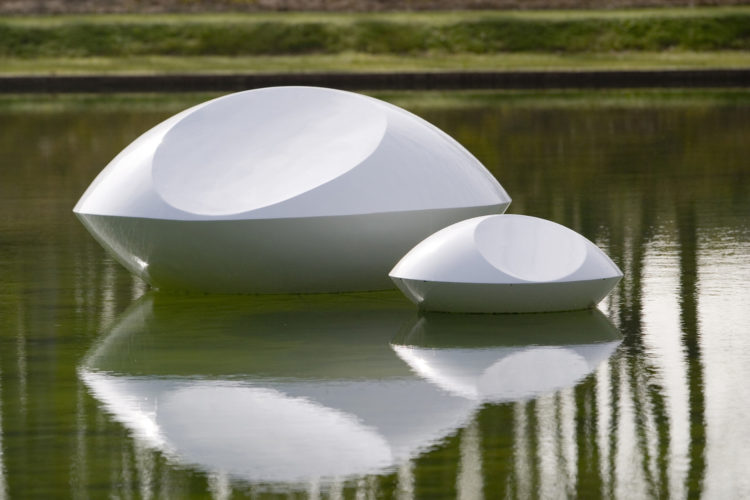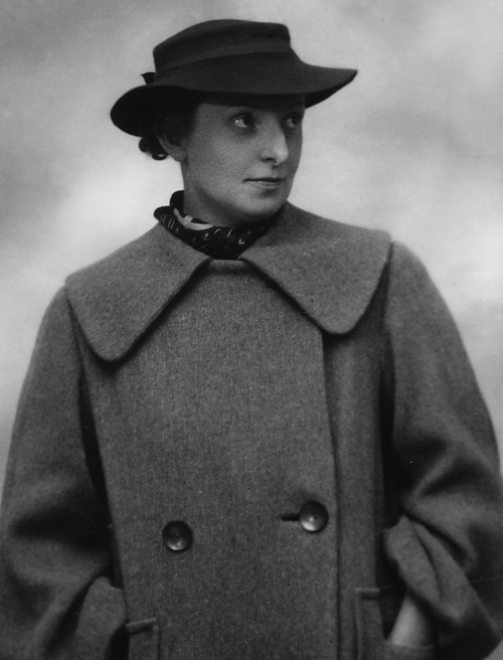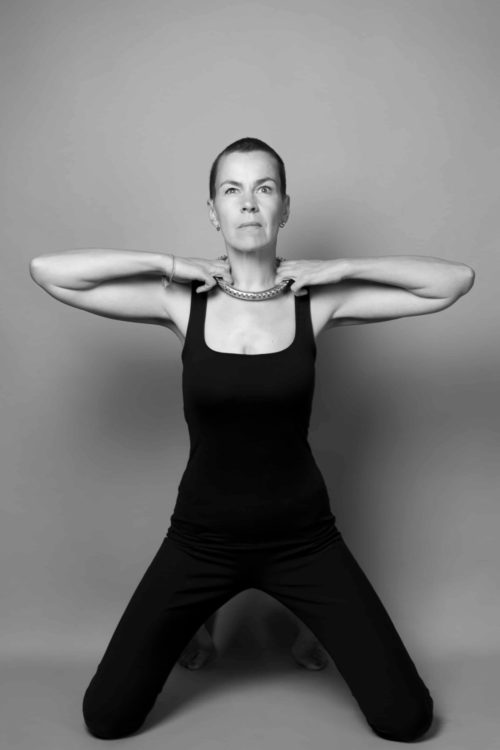Kristine Mei
Kai Stahl, Ainulaadne sõsarkond. Õed Kristine, Lydia ja Natalie Mei [A unique sisterhood. Sisters Kristine, Lydia and Natalie Mei], Tallinn, Art Museum of Estonia, 2020
The Mei Sisters: Avant-Garde and the Everyday Life, Kumu Art Museum, Tallinn, Estonia,13 March – 31 August, 2025
→Kunstiühing Pallase III näitus, Raekoja plats 8, Tartu, Estonia, 11 May –1 June, 1919
Estonian sculptor and calligraphist.
Kristine Mei was the first professional woman sculptor in Estonia, as well as a talented calligrapher and book designer. She was born in Liepāja, where her father – a seafarer from the island of Hiiumaa – was stationed as a naval captain in the local military harbour. She was the oldest of three sisters, followed by Lydia (1896–1965) and Natalie (1900–1975), who both also went on to become distinguished artists.
In 1912 the family relocated to Tallinn, and in the following year K. Mei started her formal art studies in Helsinki, at the Finnish Art Society’s drawing school located in the Ateneum building. She graduated in 1916, becoming the first Estonian woman to earn a degree in sculpture. K. Mei’s early sculptural work, in materials ranging from ceramics to wood or concrete, was often small in scale and rich in character, frequently featuring humorous or caricatured portrayals of those in her creative circle. Her later sculptures were inspired by the modern leisure culture and sometimes cultures perceived as exotic by Europeans, the most famous example being the ceramic statuette Mees banaanidega [Man with Bananas, 1925].
After returning to Estonia, K. Mei took on a teaching position at the Tallinn Industrial Art School, where she instructed students in modelling, amongst them the future renowned graphic artist Eduard Wiiralt (1898–1954). In 1919, K. Mei and her sisters, being the only female participants, exhibited their works in the third exhibition of the Pallas Art Society, making history as some of the first women to be featured in such a prominent artistic venue in Estonia.
K. Mei’s artistic path took a new direction after she married the linguist Julius Mark in 1921, moved to Tartu, and became the mother of four daughters. Sculpture, with its physical demands and space requirements, became less feasible, leading her to focus increasingly on calligraphy and book design. Her work was characterised by a refined sense of design and a love of detail, blending the traditions of manuscript art with a modern aesthetic. K. Mei’s talent for calligraphy was so exceptional and valued that it brought her the position as unofficial artist of the University of Tartu, as well as giving her opportunities to work with international clients. In addition, she took part in ethnographic research trips, where she used her artistic skills to document the artefacts collected for the Estonian National Museum and cooperated with many other museums and institutions.
In the early 1950s K. Mei moved back to Tallinn, where she lived until her death in 1969. In the later years she dedicated herself to writing memoirs and producing surrealistic and humorous collages, mostly for her own amusement. Although many of her artworks have not survived, her multifaceted oeuvre continues to be celebrated for its originality and craftsmanship.
Most of K. Mei’s sculptures are sadly lost or in private hands, but one sculpture is held in each of the collections of the Art Museum of Estonia, Tartu Art Museum, Hiiumaa Museum and the University of Tartu Museum. The archive of the Art Museum of Estonia also holds many calligraphic works and collages by K. Mei, which together with all of her surviving sculptures were exhibited in the 2025 joint exhibition The Mei Sisters: Avant-Garde and the Everyday Life at Kumu Art Museum in Tallinn, Estonia.
A biography produced as part of AMIS: AWARE Museum Initiative and Support
© Archives of Women Artists, Research and Exhibitions, 2025


